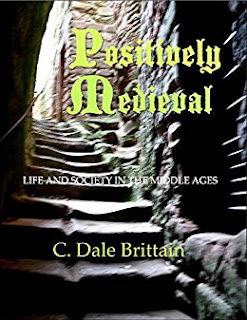The Judeo-Christian world has always been full of prophecy--it is right now. Prophecy gives clarity: it explains why things are happening, that they are all building up to something important, that there is some sort of plan behind what might seem like random events. Even a bawdlerized version of prophecy, like a horoscope or a fortune cookie, can give meaning to what is happening or explain what you can do to improve matters. And prophecy provides reassurance--as bad as things may be right now, they're going to get better. But what happens when prophecy fails?
This has been a problem for quite a while. The prophetic books of the Bible, especially Isaiah and Jeremiah, are full of excellent prophecies about better things to come, the Messiah who will help his chosen people, who will beat their swords into plow shares and relax under their vine and fig tree. Yet the Jews are still awaiting the Messiah 2500 years later, and ever since the Romans drove large numbers of them out of their Holy Land in the first century AD, they have been saying, "Next year in Jerusalem." (Even now, almost 75 years after the foundation of the modern state of Israel, there are plenty of prophecies still waiting to come true.)
The New Testament writers, especially Matthew, emphasized that Jesus was the hoped-for Messiah by explaining how all sorts of details of his life matched the prophecies. The last book of the New Testament prophesises the Apocalypse. The so-called Sybilline prophets purported to have prophesied major parts of the Gospels. If something happens to fulfill the prophecy, it has much more weight than something that just happens.
The Middle Ages always had various prophecies. Not surprisingly, they tended to appear in times of uncertainty. Prophets, who announced that they had direct messages from God, appeared with some frequency, even if often labeled (correctly) as heretics. Even though nobody seems to have expected the world to end in the year 1000, there was a great deal of concern that it might end in 1260, as I discussed earlier. (Spoiler alert--it didn't.)
One of the biggest problems for prophets and their faithful followers is what to do when prophecy fails. Sometimes it really doesn't matter, because the end of the prophecy is marked by the end of the prophet, as in the Children's Crusade in the thirteenth century, when some young folks became convinced that God had told them to go to the Holy Land, where their innocence and purity would overcome the Muslims. As you probably guessed, it didn't work, and they ended up sold into slavery.
In fact prophecy fails more often than not. Even when there are prophecies now about something like the Super Bowl winner or a presidential election, they are going to be wrong half the time, and the full-blown conspiracy theory type prophecies, where all sorts of startling events will happen and a savior will unexpectedly emerge, tend to be wrong a lot more than that. For example, as I discussed earlier, the "White Caps" of the late twelfth century were following a prophecy that the Virgin wanted them to attack the bandits and cruel lords who were terrorizing the region. But apparently the prophecy left out the part where the bishop would raise an army and crush the White Caps.
So what do you do when you believe in a prophecy and it fails? Or even worse, when you have been the prophet but your prophecy failed to materialize? In 1260, when the world stubbornly refused to end, the most common reaction was to quietly go home and pretend one had never believed it anyway. One small group of true believers insisted the world really had ended, but they were the only ones with the insight to see it. (This was not widely believed.)
Few prophets, in the Middle Ages or now, will admit they were wrong, though a few will suggest that maybe they were too prideful about getting direct messages from God and that God wanted to teach them a sharp lesson. More common is (and was) to say that some aspect of the prophecy was misunderstood and that the amazing events are still coming, but maybe not quite yet. After a while this gets old. (Though the imminent Second Coming of Christ has been prophesied for over 1900 years without losing its power as a prophecy.) Or one can say that God saw all the true believers and withheld His punishment or apocalypse or consuming fire, so it was like the prophecy was really true.
Those who believe in prophecy are hard to shake. The current global pandemic has produced a number of prophecies, which are often indistinguishable from urban legends. An interesting comment I've heard about all things pandemic: "It's easier to persuade people to believe something that is not true, than to persuade them that what they believe is not true." The prophecy hasn't failed a bit! You just don't understand.
© C. Dale Brittain 2021
For more on medieval religion and society, see my ebook,
Positively Medieval: Life and Society in the Middle Ages, available on
Amazon and other e-tailers. Also available in paperback!




